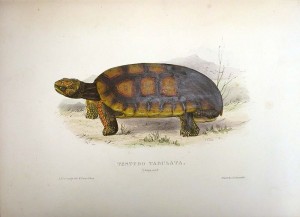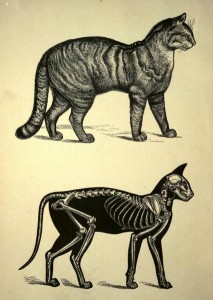You would imagine by virtue of their profession that taxidermists lead unusual lives, but 19th-century practitioners of this profession had especially turbulent existences. A peek into their world, courtesy of several articles from the Brooklyn Daily Eagle.
••••••••••
“Tenacity of the Turtle” (September 15, 1899): “H.R. Dill, the Gardiner taxidermist who recently received a large hook bill turtle to be mounted from the game commissioners, was surprised when he commenced work on the shelled monster to find that he was alive. He tried every method imaginable to kill the turtle, but was unsuccessful until he removed its heart and placed it upon the table. In this position and pinned to the table by a knife, this organ pulsated regularly for three hours before it died.”
••••••••••
“Heart Disease or Suicide” (January 11, 1893): “William J. Kampfmueller, a taxidermist of 365 Broadway died suddenly at his home, 303 Hewes Street. His friends say that he died of heart disease, but neighbors whisper about suicide.
A month ago one of Mr. Kampfmueller’s clerks absconded with a large sum of money, and ever since the taxidermist, who was 52 years old, had been very despondent as it crippled him considerably in his business. He was seen about the place yesterday morning and was in good health. The family says that he died of natural causes and indignantly deny the theory of suicide.”
••••••••••
“Taxidermy and Its Profits” (August 14, 1887): “A few blocks distant from the bird fancier’s is the shop of a taxidermist. Its owner, a little old man with a very bald head, received the reporter cautiously. He said: ‘This is the best time of the year for my business. In the Spring and Summer many handsome birds are shot. These are often brought to me to stuff. Cats are more frequently stuffed than any other kind of animals. I get $5 for stuffing one, where formerly I received triple that amount. While many taxidermists use straw, I prefer cotton. Hair is sometimes used, but it is too expensive. It costs $1 to stuff a parrot. Smaller birds cost less.'”
••••••••••
“Taxidermist Fails” (August 13, 1900): “Corpus Christi, Tex.–Professor G.W. Knott, as an Englishman, employed by the British Museum as a taxidermist in Texas and Mexico, was drowned Sunday night in the bay here. Knott was landed at the Central Wharf in a yawl boat from the schooner Reliable, which brought him from Mustang Island, near this city, where he had been engaged for several months securing the specimens of all kinds of water fowl. When he landed on the wharf the professor was somewhat under the influence of liquor and fell backward into the water, drowning before he could be rescued. Professor Knott was one of the most expert taxidermists in the world.”


